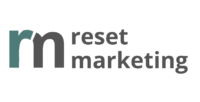Stage 3: Planning your website content.
To help you through the planning phase of your website, I have made a quick checklist. Try to do them in this order, as sometimes, if you jump around, you may find you need something from a previous step that you missed.
1. How to write a website site plan:
Think of a site plan, like the family tree for your website. Fortunately the annual or monthly running costs of a website will not change much by how many pages you have. Yet, your website build cost will change accordingly.
Go and look at your competitors and take notice of how many pages they have on their site and how it flows together. If you find you offer the same services/products as they do and you think their layout is user friendly, then write it all down, and simply replace their menu names with your services.
As a starting point, I always recommend a minimum 5 pages (home, about, contact and 2 product pages). Baby steps and starting small, is always a great way to take your first steps into the digital world. There are no gold medals for having 20 pages full of rubbish. People are time poor, you need to plan your pages to be easy to read, informative and concise. If you confuse them, trust me, they will click out and go to your competitor’s website. More on that in another article.
2. Start writing your copy.
Now that you have been on a few websites, got some ideas and have a site plan, you can better start planning out each individual page. Take snippets from all the websites you like and combine them to make your content plan. You can use inspiration and direction from the websites you researched in Stage 2 website designing.
For example:
About page ideas – Can you list all the awards and titles you have won? Don’t forget to mention your qualifications and any media or PR you have had in the past. Can you include some gems about your personality and give the readers a better idea of who you are as a person. No-one likes reading a clinical website, especially in the Personal Training industry, where personality and relating to people is so important.
3. Collect images you want:
Now that you have a basic outline of how many pages you want and some draft content for your pages. Your designer/developer’s quote may have included purchasing some stock images (eg: iStock, Shutterstock or Dreamtime). Personality I don’t like purchased images on websites – images with random models on your website, may look pretty, but it won’t show your personality or make you relatable.
Start to plan each of your pages. Here is my list based on my basic starter website package.
- Home page: Eye catching shot for a banner (preferably landscape).
- About Page: Your favourite mug shot, or a pic of you training your classes or clients.
- Product/Services pages: Something that shows your classes in action. Perhaps a YouTube video of you talking about it, or a demo of how the product/service works. Any diagrams or progress time lines that help potential customers understand your product and how you are different from your competitors. If you want to know more about understanding your clients, read my article on target personas.
Meanwhile in the back ground, your designer/developer will have been setting up the website and applying your chosen theme, coding to your brand colours into the HTML etc. Therefore, the next step for you, is to provide everything to your designer/developer, and they will start populating your website.
Share everything with your designer/developer via the shared folders mentioned in Stage 2.
How did you go?
Too overwhelming? If so, email me, or shoot me a DM on Instagram, I’m happy to answer any questions.
